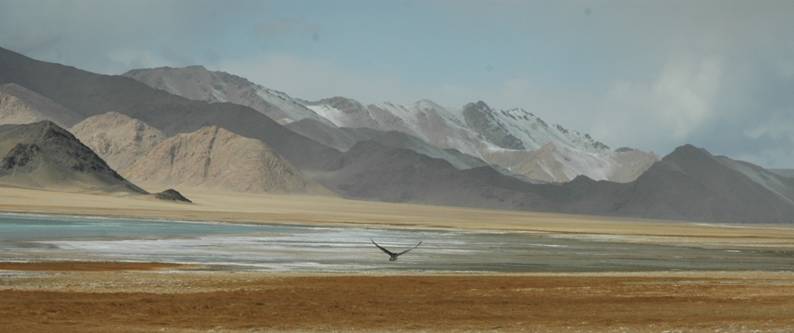
The journey from Kashgar to our first stop at Yecheng, took us through the edge of the Taklaman desert, which covers most of Xinjiang and has the main silk routes East running along its Northern and Southern edges. We would be leaving the Southern route at Yecheng and heading further South along Highway 219, the Xinjiang Tibet highway and the highest road in the world. In the meantime our day was a windy one and we passed through the desert and occasional oasis villages with a constant haze of dust in the air, covering homes, fields, poplar trees and us. The local homes barricade themselves against the dust behind rows of poplars then walled courtyards entered by wonderfully ornate doors with elaborate hinge plates.
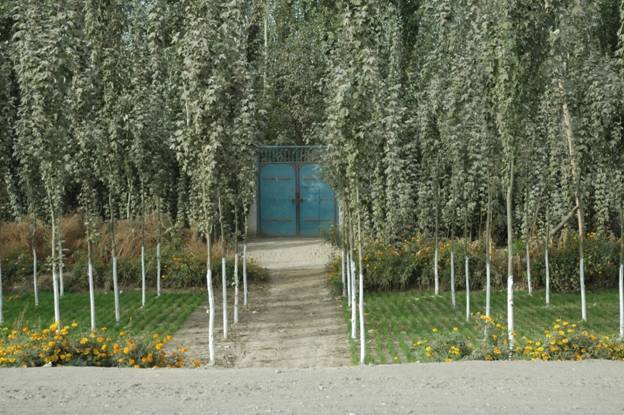
We stayed the night in Yecheng in a Chinese run hotel, one of two in which foreigners are permitted to stay, and we ate at a Sichuan restaurant. Our guide, Leon, is from Sichuan and many of the Han Chinese that have “gone West” are also from that province as it borders Tibet and already has a sizeable Tibetan population of its own. As a result we would be eating predominantly Sichuan food in the weeks ahead. This was no great chore as Sichuan food is excellent, if sometimes a little spicy, and Tibetan food in particular is an acquired taste. The hotel was also familiar, even from our time working in the South West of China. Having to pass certain criteria to be allowed to accommodate lucrative foreigners the layout is inevitably formulaic, however most are build with high aspirations that can rarely be sustained and quickly fall into disrepair.
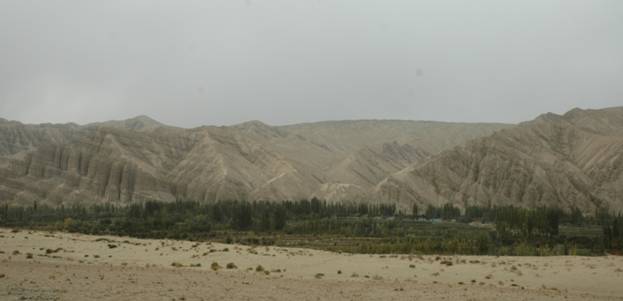
Once off the tarmac the route 219 starts as a series of stomach-clenching, snow-covered passes of increasing altitude followed by drops into still-high valleys and small, mostly Han Chinese, truck stops below. We had been taking our Diamox, and this along with our time at altitude in Kyrgyzstan meant that we barely noticed as the air thinned until we were finally onto the plateau on our third day crossing the 5300m ish Khitai Shankou and a day’s driving above 5000m. All maps and accounts invariably disagree on altitudes along our route, perhaps sea level can become an arbitrary concept this far from a beach, we tended to take an average or just be vague. The Landy showed more symptoms of the thin air, with a loss of power and black smoke when outside the turbo range, however we had plenty of time and patience, it may also have helped that we had feared worse.
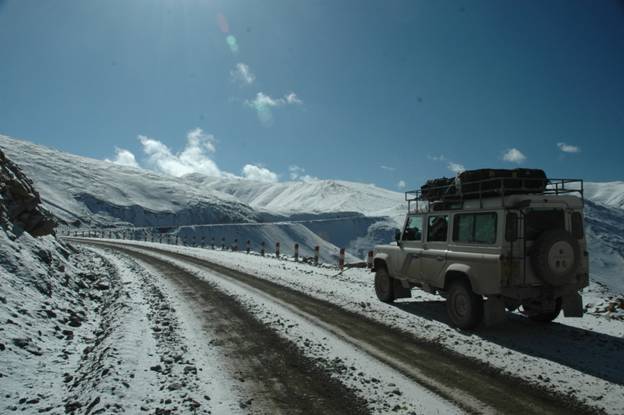
During the days we rarely saw another vehicle other than an occasional truck ferrying supplies from Kashgar further East. Some of these were driven with an apparently fatalistic attitude and we saw many near misses until we came upon our first accident on the way up our highest pass. A diesel tanker had hit a mound and had overturned, astonishingly remaining on the single track and not injuring the driver or his wife. We watched as a group of trucks and drivers worked to drag the tanker to a passing place, flip it back onto its wheels, pull and rip back the mangled cab until the driver could get behind the wheel then finally light a fire under the diesel tanks to get the waxy fuel flowing once more in the freezing air. At this point better instincts took over and we retreated to the car until we could get past and get on with our day in comparative safety.
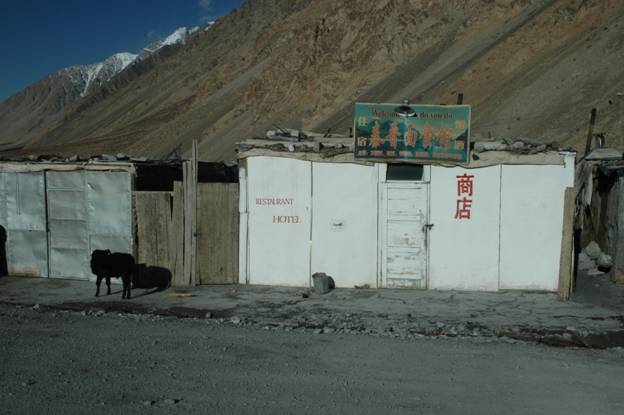
The scenery was also stunning on a grand scale. On this side of the plateau the climate is still arid with little vegetation and as a result there are few signs of habitation. We spent our first three nights at truck stops, which are no more than a few concrete, tin or adobe huts with a communal room heated by a poo-fired stove, a kitchen and a few unheated rooms. When we asked where the toilet was situated at one we were waved to the great, cold outdoors. The rooms have either a couple of single bench beds for 40 Yuen or a large communal platform for 10. We usually stretched to the £4 price tag of a private room away from the hoiking and spitting MaYong players. Being Sichuan enterprises we ate Sichuan food and kept the cold away with gallons of green tea refilled from a kettle or a number of immense thermos flasks that are kept permanently topped up.
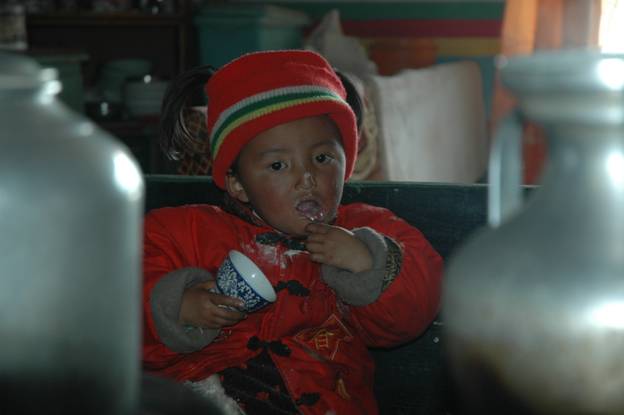
Once across the highest passes we left Xinjiang behind and headed into Western Tibet, or Ngari. The amount of vegetation and the number of settlements immediately increased although it was still a half day’s drive between villages. Many people here are still partially nomadic, the main income coming from Yak or sheep based products. In particular, Yak butter is prized as the main constituent in salted Tibetan tea. The other Tibetan staple is Tsamba: a flour made from barley which is either eaten dry or mixed with the tea. As much as we would prefer to eat locally, both staples take some getting used to: the only way we could eat tsamba was with sugar or not at all, although Ruth swears it tasted like hot Weetabix.
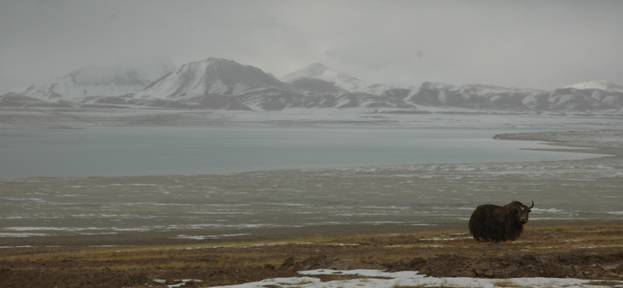
We also spent our first night in a Tibetan guesthouse, a step up from the truck stops we had been used to. The format was very similar; however our rooms usually had small pot bellied stoves for early evening warmth. Best of all was the architecture. Tibetans are immensely proud of their homes, which are built to face the South with large expanses of glass gathering all available sunlight. The design is incredibly ornate with intricately carved and brightly painted woodwork both outside and in. Garish in any other setting, in the bright sun and wide landscapes of Tibet the effect is spellbinding.
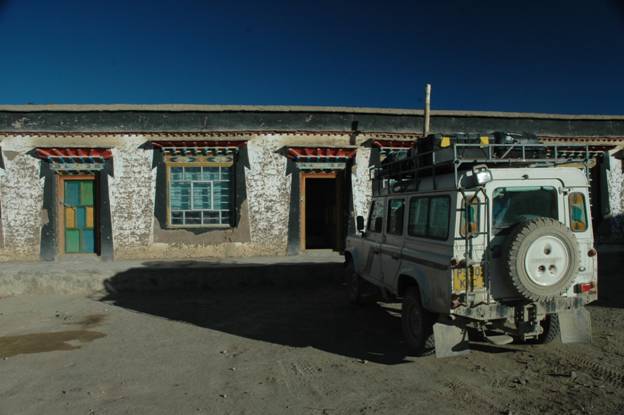
The ability of the Tibetans to enhance the scenic beauty of the landscape through their buildings surpasses even the Georgians’. Monasteries and shrines are positioned in outstandingly beautiful locations, usually set into a crag or hill, probably overlooking a mountain or valley. All of which must do as much as monumental European church architecture to lift the soul. Prayer flags in particular, probably because they must catch the wind to release their prayers, are invariably positioned in highly visible locations such as bridges, mountain peaks and passes. It became hard to ignore the infinite photo opportunities and move on.
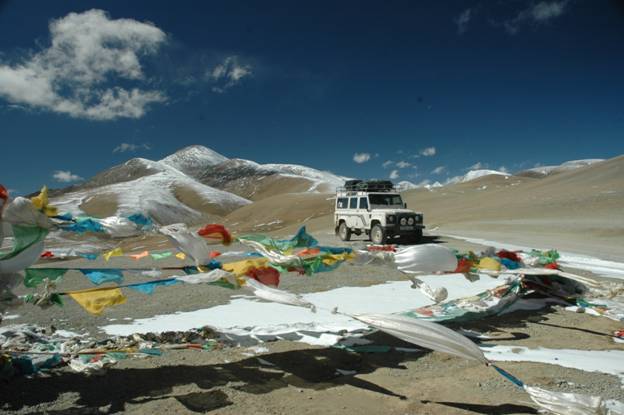
One of the experiences that we thought we had grown used to was the amount of attention that we and our car in particular can attract. However, in Tibet this grew to an almost farcical degree. Tibetans are both very friendly and immensely curious, invariably crowding the car, sometimes inspecting, occasionally reaching in the window to test the wheel or indicator switches but mostly just staring. The latter takes some getting used to and we soon learnt to break the tension with a cheery “Tashi Deleg!”
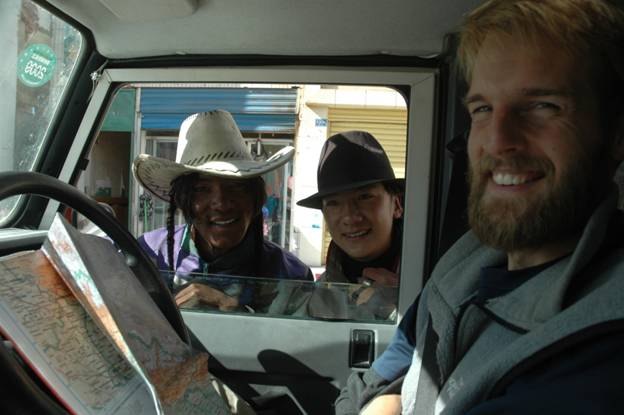
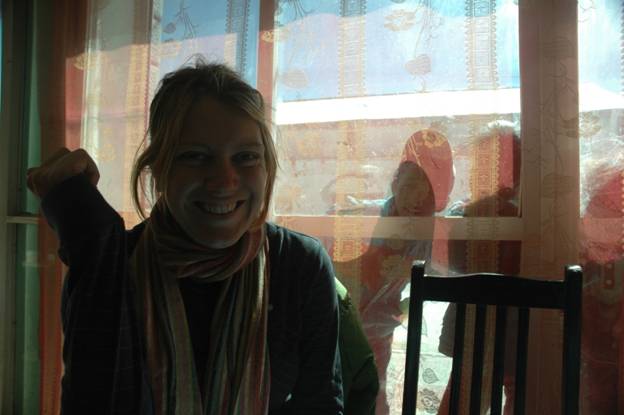
4 days and 1000km after Yecheng our first big settlement in Tibet was Gar, capital of the Ngari county of Tibet, Ali in Chinese. Here the Tibetan architecture gave way to Chinese tile and regulation shop fronts, while we found ourselves in an over-priced hotel, the only place foreigners were permitted to stay. With a shock we also came off the beaten tracks we had been used to and hit beautiful clean black tarmac, part of the Chinese government’s plan to open up Tibet to outside influence.
From this point on the roads were either pristine tarmac, under construction or overlooked back routes. The roads under construction were the worst. Journeys of hundreds of km would take place in small dashes of a few hundred yards followed by a detour through ankle to calf-deep dust, often fording streams as we avoided half finished bridges. We could only stand an hour at the wheel before succumbing to the intense concentration and battering these detours took. Our first road like this took the life of our anti roll bar along with a rusted chunk of the chassis. This is the most serious of various new rattles, lost bulbs and discarded pieces of metal that we have suffered, none of them catastrophic.
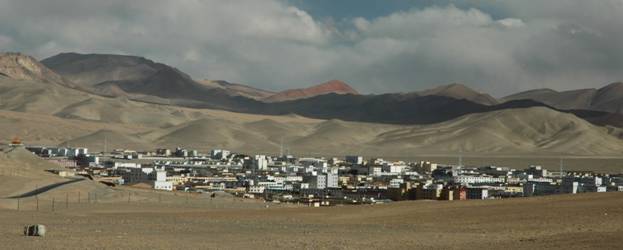
Our favourite roads remained the overlooked county tracks, so when we were told that the path to the Guge kingdom was “very bad”, and having a day spare, we decided to take it on a whim.